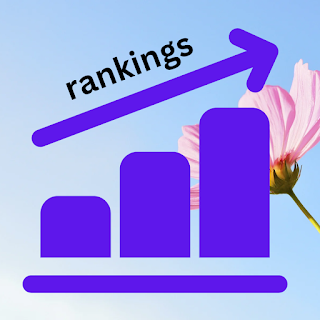Introduction
Your website is a crucial component of your digital marketing strategy. It is the primary touchpoint for your audience, and it should be optimized for user experience, functionality, and search engine rankings. However, there comes a time when you need to redesign your website to give it a fresh look, improve its functionality, or add new features. When redesigning your website, the last thing you want is to lose your Google rankings. In this blog post, we will discuss how you can redesign your website without losing your Google rankings.
 |
| Redesign website |
Topics included
Understand your current website rankings
Create a redesign plan
Use 301 redirects
Update your sitemap and robots.txt file
Optimize your website for speed and mobile-friendliness
Monitor your website after the redesign
1 : Understand your current website rankings
 |
| Website ranking |
Before you start redesigning your website, it is essential to understand your current website rankings. You can use tools like Google Analytics, Google Search Console, and Ahrefs to see which pages are driving traffic to your website, which keywords are driving traffic, and which pages have high bounce rates. Once you have this information, you can prioritize which pages you need to focus on during the redesign process.
2 : Create a redesign plan
Creating a redesign plan is crucial to ensure that you don’t lose your Google rankings. Your redesign plan should include the following:
• The new website structure
• The new URL structure
• The content that needs to be updated
• The keywords you want to target
• The pages you want to prioritize
3 : Use 301 redirects
When you redesign your website, you may change the URL structure of your pages. If you do this, it is essential to use 301 redirects to ensure that any links pointing to your old pages are redirected to your new pages. This will ensure that you don’t lose any of your Google rankings.
4 : Update your sitemap and robots.txt file
After redesigning your website, you need to update your sitemap and robots.txt file. Your sitemap should contain the new URL structure of your pages, and your robots.txt file should allow Google to crawl your website.
5 : Optimize your website for speed and mobile-friendliness
Google considers website speed and mobile-friendliness when ranking websites. Therefore, it is essential to optimize your website for speed and mobile-friendliness during the redesign process. You can use tools like Google’s PageSpeed Insights and Mobile-Friendly Test to ensure that your website is optimized for speed and mobile-friendliness.
6 : Monitor your website after the redesign
After redesigning your website, it is essential to monitor your website’s traffic, rankings, and user behavior. You can use tools like Google Analytics and Google Search Console to monitor your website’s performance. If you notice any significant changes in your website’s performance, you may need to make further adjustments to your website.
 |
| Website traffic |
Method
The method for redesigning your website without losing your Google rankings is straightforward. You need to understand your current website rankings, create a redesign plan, use 301 redirects, update your sitemap and robots.txt file, optimize your website for speed and mobile-friendliness, and monitor your website after the redesign.
Prons
• You can give your website a fresh look without losing your Google rankings.
• You can improve your website’s functionality and user experience without losing your Google rankings.
• You can add new features to your website without losing your Google rankings.
Cons
• Redesigning your website can be time-consuming and costly.
• There is a risk of losing your Google rankings if you don’t follow the proper steps.
Conclusion
Redesigning your website is essential to ensure that your website remains competitive in today’s digital landscapeIn conclusion, redesigning your website is essential to stay competitive, enhance user experience, optimize for search engines, align with business goals, and improve overall performance. It is a crucial investment that can positively impact your online presence and contribute to the success of your business in today’s digital landscape.
